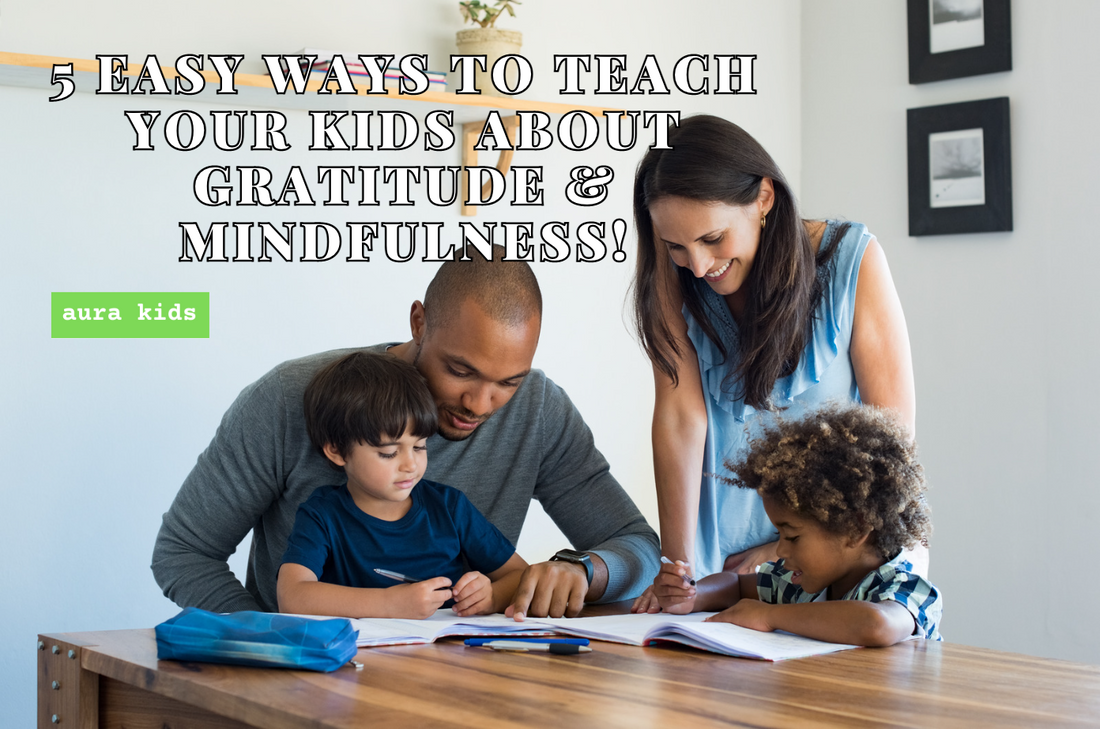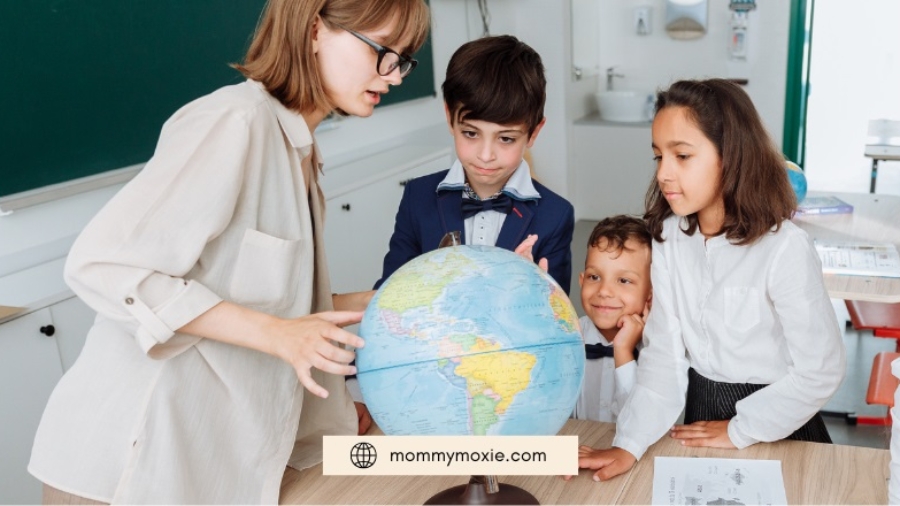Teaching kids about gratitude and mindfulness helps them develop emotional intelligence. These practices teach children to appreciate what they have and live in the moment.
In today’s fast-paced world, kids often feel overwhelmed and stressed. Introducing them to gratitude and mindfulness can make a big difference. Gratitude helps them see the good in their lives, while mindfulness teaches them to focus on the present. Together, these practices can improve their mental health and well-being.
They learn to handle stress better and enjoy life more. By teaching kids these skills, we give them tools to lead happier, more balanced lives.

Credit: www.amazon.com
Benefits Of Gratitude
Teaching kids about gratitude and mindfulness builds emotional resilience. They learn to appreciate small joys and stay present. This practice fosters positive relationships and overall well-being.
Gratitude is more than just saying “thank you.” It’s a powerful tool that can significantly improve your child’s life. Teaching kids about gratitude and mindfulness can help them develop a positive outlook on life. Let’s dive into the benefits of gratitude.Emotional Well-being
Gratitude fosters emotional well-being. Kids who practice gratitude tend to be happier and more optimistic. It helps them focus on the positive aspects of their lives. When children express gratitude, they build stronger relationships. They feel more connected to others, leading to reduced feelings of loneliness. Encourage your kids to keep a gratitude journal. Writing down what they are thankful for can be a simple yet effective way to boost their mood.Physical Health
Gratitude positively impacts physical health. Kids who regularly practice gratitude often experience fewer ailments. They may have better sleep patterns and more energy. Grateful children are likely to engage in healthier behaviors. For instance, they might choose nutritious foods or enjoy regular physical activities. A personal story: I started a gratitude jar with my kids. Every night, they write something they are thankful for and place it in the jar. This simple activity has made bedtime more peaceful and improved their overall well-being. How can you integrate gratitude into your daily routine with your kids? What small changes can make a big impact? Teaching your kids about gratitude and mindfulness is not just a lesson but a gift that can enhance their emotional and physical health. It’s a practice that can lead to a happier, healthier life.Practicing Mindfulness
Teaching kids about gratitude and mindfulness is more important than ever in our fast-paced world. Practicing mindfulness can help children understand their emotions, develop empathy, and find peace in everyday moments. In this section, we’ll explore some simple ways to practice mindfulness with your kids.
Daily Exercises
Integrating mindfulness into daily routines can be both fun and beneficial for kids. One easy way to start is by creating a “mindful moment” during a regular activity, like brushing teeth or eating breakfast.
Encourage your child to focus on their senses during these activities. Ask them what they can hear, see, smell, taste, and feel. This practice helps them stay present and appreciate the moment.
Another effective daily exercise is to keep a gratitude journal. At the end of each day, sit down with your child and write down three things they are grateful for. This not only fosters gratitude but also ends the day on a positive note.
Mindful Breathing
Teaching your child mindful breathing can be a powerful tool for managing stress and anxiety. Start by sitting comfortably with your child and taking deep breaths together.
You can use the “smell the flower, blow out the candle” technique. Ask your child to imagine smelling a flower while inhaling deeply through their nose, then blowing out a candle while exhaling through their mouth. This simple exercise can calm their mind and body.
Another fun activity is to use a breathing buddy. Give your child a small stuffed animal to place on their belly as they lie down. Ask them to watch the stuffed animal rise and fall with each breath. This visual cue helps them focus on their breathing.
Have you ever tried mindful breathing with your kids? What was their favorite part? Share your experiences and tips in the comments below!
Incorporating Lessons Into Daily Life
Teaching kids about gratitude and mindfulness can be fun. Incorporating these lessons into daily life helps reinforce their importance. By making gratitude and mindfulness a natural part of everyday routines, children learn to value them deeply. Here are some practical ways to integrate these teachings.
Family Activities
Family activities offer a great way to practice gratitude and mindfulness together. Start with a daily gratitude journal. Each family member writes down three things they are thankful for. Share these during dinner. This practice fosters a positive environment.
Another idea is to create a gratitude jar. Family members can add notes of gratitude throughout the week. Read the notes together on weekends. This activity builds a habit of recognizing good things.
Mindfulness can be practiced through simple activities. Try mindful breathing exercises before bed. Teach kids to focus on their breath. This helps them relax and improves their focus. Nature walks also offer a chance to practice mindfulness. Encourage kids to notice sounds, smells, and sights around them.
School Programs
Schools can play a key role in teaching gratitude and mindfulness. Many schools have started integrating these lessons into their programs. Classroom activities can include gratitude circles. Students share something they are grateful for. This fosters a supportive classroom environment.
Mindfulness activities can also be part of the school day. Simple practices like mindful breathing or stretching can be included. These activities help students manage stress and focus better. Teachers can also incorporate stories and books that highlight gratitude and mindfulness. These stories can lead to discussions and reflections.
Schools can also organize special events or workshops. These can focus on teaching mindfulness techniques and the importance of gratitude. Inviting guest speakers or organizing mindfulness sessions can provide valuable learning experiences for students.

Credit: www.amazon.com

Credit: www.aurakids.ca
Frequently Asked Questions
How To Teach Your Children Gratitude?
Teach children gratitude by setting an example, encouraging thank-you notes, practicing daily reflection, involving them in charity, and celebrating kindness.
How Is Gratitude Related To Mindfulness?
Gratitude enhances mindfulness by focusing attention on the present moment. It helps cultivate a positive mindset, reducing stress. Practicing gratitude regularly improves mental well-being and emotional resilience. Both practices together promote overall happiness and awareness.
What Is Gratitude Explained For Kids?
Gratitude means feeling thankful for the good things in your life. It’s like saying “thank you” and appreciating what you have.
What Are The Four Parts Of Gratitude?
The four parts of gratitude are noticing, thinking, feeling, and doing. Notice what you’re grateful for. Think about why you’re grateful. Feel the gratitude deeply. Do something to express your appreciation.
How Can I Teach Kids About Gratitude?
Start with simple activities. Encourage them to say thank you. Discuss what they are grateful for daily.
Conclusion
Teaching kids about gratitude and mindfulness fosters emotional growth. They learn to appreciate life’s small moments. These skills improve their mental well-being. Practicing gratitude helps kids stay positive. Mindfulness teaches them to stay present. Together, these habits build a happier, healthier future.
Start today. Guide your children on this journey. Gratitude and mindfulness can shape their lives positively. Encourage them daily. Watch them flourish.

